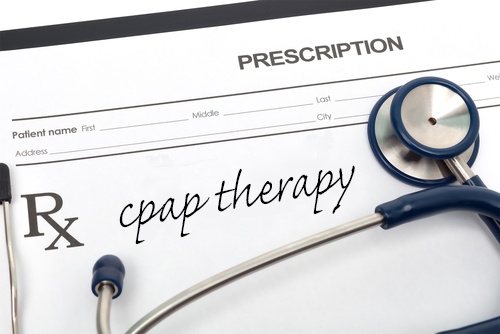
Patients have a lot of questions regarding prescriptions for CPAP therapy such as: Why do I need a prescription? Where can I get a prescription? How long is a prescription good for? Here we aim to answer these important questions and more.
Common CPAP prescription questions
Why do I need a prescription?
Under federal law, medical devices are categorized into 3 classes–class I, II, or III- based on their risks and the regulatory controls necessary to provide a reasonable assurance of safety and effectiveness by the Food and Drug Administration (FDA).
Medical devices are categorized into 3 classes–class I, II, or III- based on their risks and the regulatory controls necessary to provide a reasonable assurance of safety and effectiveness.
CPAP devices are considered a Class II Medical Device , and as such require a prescription for distribution.
There are a couple of reasons why a prescription is necessary to purchase CPAP medical equipment:
Insurances require a prescription to cover payments. Without a prescription, they will not pay for equipment.
Prescriptions come with a set pressure setting based on the results of the sleep study. A machine cannot be adequately set without pressure settings. Pressure settings should only ever be determined by a board-certified sleep specialist’s interpretation of the sleep study.
Some patients being treated with CPAP for obstructive sleep apnea develop mixed sleep apnea (central sleep apnea events that emerge after therapy). Patients with mixed sleep apnea may need a different PAP machine that responds to central events such as a BiPAP machine or ASV machine.
Without a prescription that includes pressure settings based on the patient’s apnea/hypopnea index (AHI) and lowest oxygen saturation (SaO2), patients may not receive the best care. Inadequate settings can be harmful to a patient’s health.
How Do I get a CPAP prescription?
The first thing you need to do is have a sleep study. In order to obtain a prescription, a sleep study is necessary to confirm a diagnosis of sleep apnea. Patients can opt to have an attended sleep study at a sleep clinic (Polysomnogram/PSG), or an unattended sleep study at home (Home Sleep Test/HST).
Patients that have an HST cannot get a CPAP device (unless a follow-up titration is completed), but will instead be issued an automatic positive airway pressure (APAP) device that has a range of pressures. HST results are less detailed than attended studies, which is why prescribed machines based on HST results have a range of pressure rather than a set pressure. Attended titration studies are much more detailed and can find the exact pressure needed for CPAP therapy.
After a sleep study, a board-certified sleep physician interprets the study and recommends the pressure settings on the device based on the patient’s AHI and the lowest oxygen saturation (SaO2) percentage.
The sleep physician can either write the prescription or forward the prescription recommendations to a licensed medical professional.
Who can write CPAP prescriptions?
Medical doctors
Doctor of Osteopathy
Psychiatrist (MD only)
Physician assistant
Nurse practitioner
Dentist
Naturopathic physicians
For the most part, a prescription may be filled out by an MD or DO license to write Rx. However, the scripts are almost always based on the recommendations of the interpreting physician. If you are interested in becoming a trained medical professional you can become a Master of Science in Nursing – Adult Gerontology Nurse Practitioner. This role will enable you to prescribe CPAP machines. Although, It is always best to have a prescription from a board-certified sleep specialist.
What does the prescription need to have?
In order to acquire PAP equipment a prescription should have the following:
Physician’s contact information
Physician’s signature
Patient’s full name
Diagnosis (obstructive sleep apnea, central sleep apnea, mixed sleep apnea)
Duration (most CPAP prescriptions come with a lifetime prescription)
Type of machine (CPAP, APAP, BiPAP, ASV, etc.)
Pressure setting of the machine (fixed or range depending on machine type).
If a humidifier is included in the prescription
Mask/delivery system (usually indicates that patient can choose a preference of mask)
The recommended schedule for replacement masks, parts, and accessories
Various machine types will require different information.
CPAP device will require a single pressure setting
APAPs will have a pressure range with two settings (minimum pressure and maximum pressure)
BiPAPs will have an IPAP (inspiratory) pressure over an EPAP (expiratory) pressure
BIPAP autos will have a max IPAP and minimum EPAP
BiPAP S/T will have I/E plus a breath rate
BiPAP ASV will have a max IPAP, minimum and maximum EPAP, minimum and maximum pressure support (PS), and breath rate
How long is my prescription good for?
How long a prescription is valid for depends on the duration that the prescribing physician recommends. Most PAP prescriptions are filled out for a lifetime prescription.
However, if a prescription notes a specific number of refills, the prescription will only be valid until that number has been reached.
If a prescription notes an expiration date, the prescription is only valid until that date.
If a prescription expires, a new sleep study will be necessary to obtain a new CPAP prescription.
How do I get my CPAP equipment if I have a prescription?
First, you need to decide where you want to purchase your CPAP equipment. If you’re unsure of where to get your equipment from, check out this article that gives great tips on how to select the best CPAP provider.
The next step is getting the prescription to your equipment provider before they can dispense your order. You can either contact the prescribing physician, and have them send the prescription to the provider, or you can give your physician’s contact information to the equipment provider and have them get ahold of it.
If you live in Alaska and need a sleep study performed to diagnose and treat your sleep apnea, contact the Alaska Sleep Clinic by clicking the link below. By doing so, you will receive a free 10-minute phone consultation with a sleep educator who will help determine if a sleep study is right for you.












